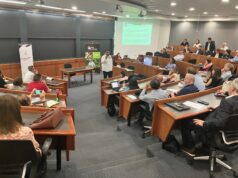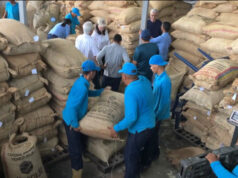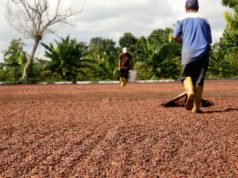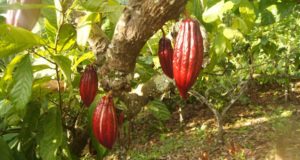By: Juan Pablo Crespo
Photos: Liliana Elías
Surrounded by bureaucracy and a weak post-harvest process Venezuelan cacao drags fetters that hinder it from retaking avid international markets, those that a century ago were under its control.
From the same ground where the tropical Theobroma cocoa grows the ordeal of the seed begins, which, despite its unique potential, does not reach to flood the world.
Let’s see, Venezuela has had, at least in recent decades, an inconsistent exportation policy on our cocoa. Evidently, this chain of weaknesses impacts directly the exquisite quality of the famed Venezuelan grain, previously coveted by Spanish colonists and now by the most famous global chocolate companies.
Abroad you can find experts, scientists, chocolatiers or institutions convinced that the Venezuelan cocoa is the best on the planet. Just to mention two opinions, we quote Moses Gomez-Miranda, Project Officer for the International Cocoa Organization, who said that “the Venezuelan cocoa is undoubtedly one of the best (For me personally, the best)”; and also the French expert in selecting chocolate, Chloé Doutre-Roussel, who said “Venezuela has the best cocoa in the world.”
Without going too far back in time, our seed was rated as the best in the world at the World Cocoa Conference 2016, held in June in Dominican Republic. There, it was confirmed that our country owns a motley array of fine and extra fine aroma cocoas.
Porcelain or Guasare (Zulia), Chuao (Aragua) or Carenero (East) are types of cocoa that symbolise a prominent value in the foreign market.
With the reputation that our cocoa enjoys, anyone might be forgiven for being boastful. However, what nature has given us is not enough without a rigorous transformation process and a sustainable strong industry for handling the fruit.
“The Venezuelan cocoa axis is the most affected in the country,” sums up Hermenegildo Sojo, president of the National Association of Cocoa Producers (ASOPROCAVE).
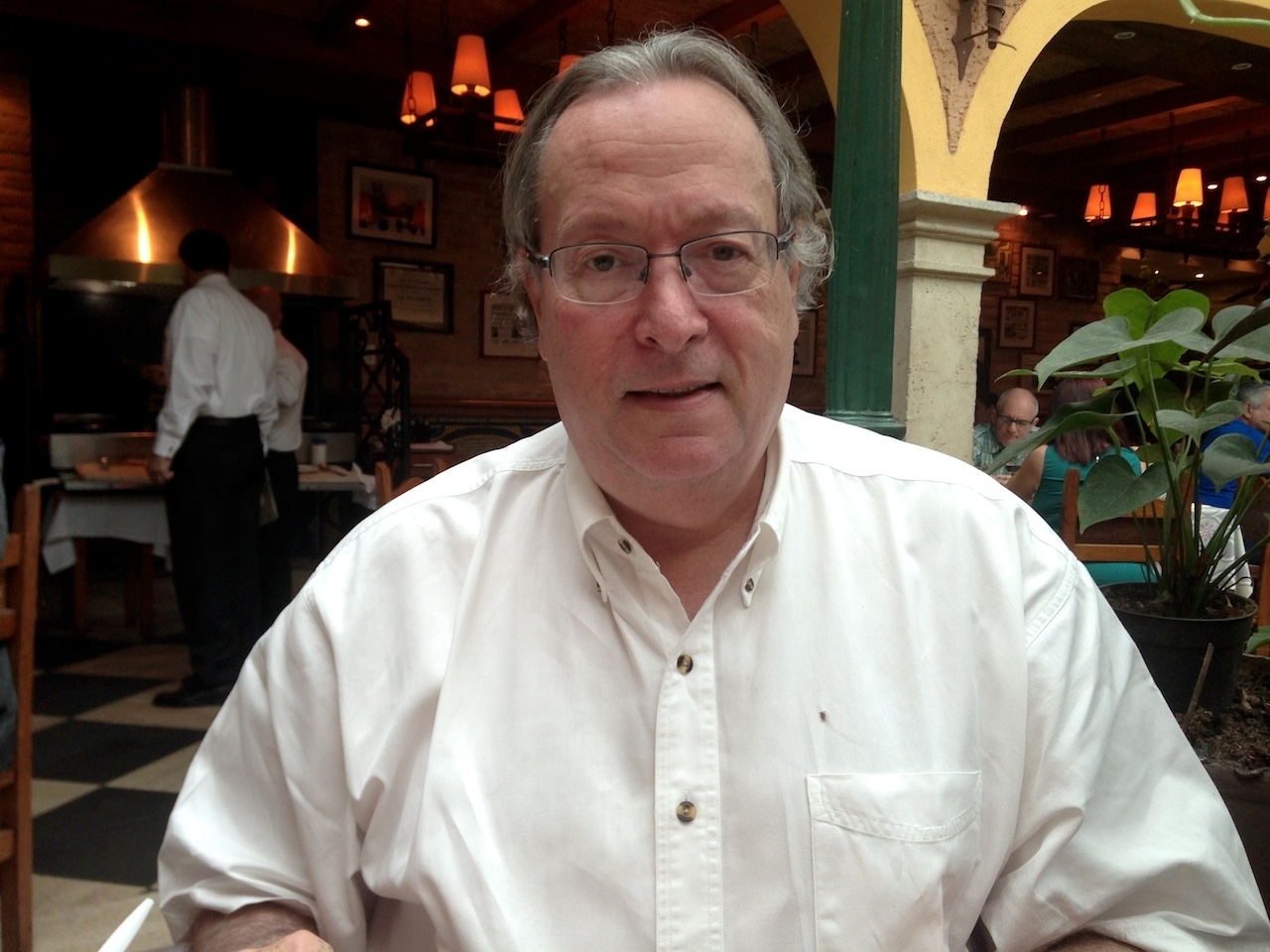
Papers and more papers
An evidence of this is that Venezuelan cocoa exporters get disorientated by a maze of bureaucratic procedures and some unorthodox practices which do not contribute to a win-win situation.
We consulted the issue with Jorge Redmond. Although he is not a cocoa exporter he knows the cocoa world by heart. In addition to being the president of Chocolates El Rey, he is also member of the board of the International Cocoa Organization (ICCO, for its English acronym) responsible for indicating which countries produce fine aroma cocoa in the world.
This Venezuelan industrialist, from Swiss ancestry, says that there used to be only four steps to be fulfilled in order to place a container of chocolate or any other product in foreign markets. However, after the Bolivarian revolution came to power, these procedures were increased substantially. “Today, there must be completed 90 procedures, allocated in 19 different ministries. It is somewhat cumbersome and expensive. “
So many procedures cause, in some cases, the increase of expenses since the company is forced, as it is the case of Chocolates El Rey, to open a department to track the processes step by step, which on the other hand, have different due dates and there must be fulfilled over and over again for each export process.
However, there seems to be some interest in reducing the requirements in order to lighten the process. “We are dealing with the national government how to diminish the list of procedures. I consider that no more than 10 steps would be sufficient to ensure control over each product, adds the expert with studies in business administration.
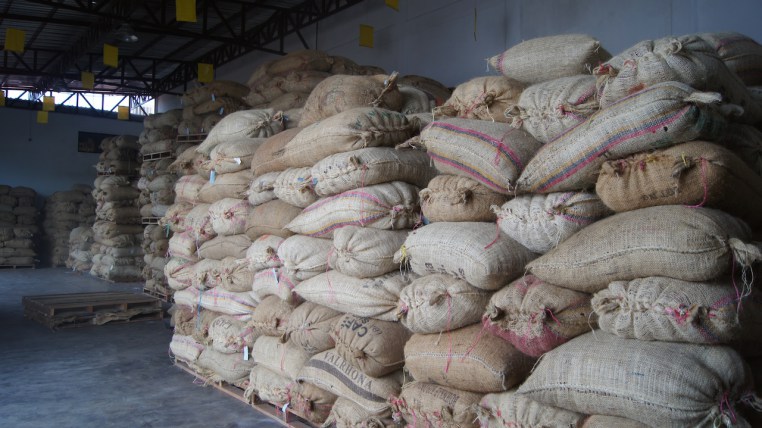
A bump in the road
Hermenegildo Sojo also speaks properly about the matter and denounces an unreasonable request of further requirements. “Although export licenses are signed at the Ministry of Agriculture and Lands, Vegetable Division, it has become a bump in the road. This service is charged in dollars to cocoa exporters. “
The producer is established in Miranda state, the country’s largest cocoa production area, located in the idyllic northern coast of Venezuela. Sojo thinks about and asks: Would it be a way to end “this racket?” He figures it out by stating “as it was said by President Hugo Chavez at the time of creating the Cocoa Board District. This will be the way to realise who is who and also who the export permits will be granted to. “

Unsteady provider
Last year our cocoa faced serious problems with export licenses due to permit restrictions imposed by the Government, which affected the country’s reputation as a secure supplier of this commodity.
After the Ministry of Agriculture established new mechanisms for the exportation of the product the situation has been improving. “The root of that problem was that some exporters had not submitted their tax returns to Central Bank of Venezuela, so the government decided to hold all export licenses while all those involved were inspected. The issue was overcome and exports have been restored in a certain way with some exceptions, since some individuals are not being granted export licenses due to not doing things properly” explains Redmond.
In April 2011 the national government established by the Decree 8.157 that cocoa is an essential pillar of the security and food and agriculture sovereignty, as well as chocolate, its products and by-products. “With this statement, all farmers, artisans, producers, manufacturers and exporters were given the necessary support. Likewise, it was created the National Technical Cocoa Committee, but very little was done, “said Sojo, as the most representative voice of Venezuelan cocoa producers.
The statement declares that it will be encouraged the coordination, management and implementation among public and private bodies for training, research and innovation processes, specialized services, agro-productive programmes as well as technical assistance to producers, peasants, community organizations and workers involved in the seed.
Our markets … and Japan
Venezuela produces from 15 to 20 metric ton (mt) of cocoa a year. The lack of accuracy of this information is due to the difficulty to finding updated official figures. This situation does not happen in other countries. According to Sojo, the production ranges from 19 to 20 thousand ton, while Redmond says that this fluctuates from 15 to 16 thousand ton. At the end of last year, the president of Venezuelan Chamber of the Cocoa (CAPEC), Alejandro Prosperi, informed that the production ranged from 16 to 18 thousand tonnes, as per the growing cycle.
The domestic industry consumes nearly 10 ton per year, and the rest is exported to our regular markets in the United States of America, Europe and Asia. “Our main customer is Japan, an extraordinary and attractive market”, said Sojo.
Last year this country did not buy large quantities of Venezuelan cacao because the product contained a slight concentration of the herbicide 2,4-D. Sojo indicates that this herbicide is not used by cocoa producers but in surrounding areas, that’s why it is found in the seed. “In ASOPROCAVE we have campaigned together with the CAPEC to eliminate these chemicals from our crops.”
According to Fernando Ross, an agronomist and consultant engineer on cocoa, part of Venezuelan producers still have not realised that the profit is in exporting. “Many of them are not prepared to get involved in this part of the business. In Aragua, for instance, the exportation is not as it should be because the production is being given to intermediaries. The government could become an influence to tell producers that export is the best course to follow”
A weak post-harvest
Before getting to paperwork there must be considered that processing cocoa is such a journey which requires special care in each of its stations. Otherwise the final product will be affected and thus, the ability to place cocoa in foreign markets.
From harvest to storage, all the rigorous procedures must be followed by the book. Postharvest handling is so important since the quality of cocoa depends a great deal on this set of procedures. However, Venezuela is not exactly an example to follow when it comes to postharvest, at least for the time being.
“A cocoa pod in its optimum ripe provides the best expression of aroma. However, many producers, due to lack of time or space, harvest and mix ripe, unripe, half-ripen or damaged cocoa pods. The result is a very poor quality product”, explains the professor and cocoa researcher Elvis Portillo, Dean of the Faculty of Agronomy at the University of Zulia (LUZ).
The stumbles continue in the fermentation phase, the most important stage of post-harvest because it will allow the development of all triggers of cocoa aromas as well as some typical aromatic compounds. “More than 70% of producers do not ferment cocoa for different reasons, either they ignore the existence of the process, they do not know how to do it, or due to the price factor. In this sense, prices of fermented cocoa (which ends up being of better quality) and not fermented one are very similar. Thus, as long as there is not a significant price differential between one another, there will remain a critical situation necessary to solve. “
There are usually many botches in the drying process. At this stage the grain moisture is reduced from 50% to 8% or 6%. “Drying process is not only to place cocoa in a courtyard and leave it there for a few hours or days, and just flip it. Drying should be done gradually so that the almond does not get an acidic or inappropriate taste, affecting the quality of chocolate, “says Portillo from his office at LUZ.
If cocoa were able to speak, certainly it would have much to say about its storage conditions. “The storage must be done in a well ventilated area, in sisal sacks on a pallet, at 10 to 15 centimetres above the floor. The bags must never touch the ground in order to prevent it from moisture absorption. Moreover, the barns should not be used for storing other products, such as chemicals”
To maintain innocuousness is vital to cocoa and subsequent chocolate. A mishandling while drying or storing the product can contaminate it with fungi or bacteria. It can also be contaminated with heavy metals and chemicals resulting from the misuse of pesticides and herbicides.
Portillo recalls that there have been always protocols in Venezuela, but unfortunately the standards are rarely met. He adds that sometimes “we do not demand quality either”. The whole chain is to blame. When we go to international markets we encounter higher standards. There are customers who demand that the grain is 100% fermented or free of odd particles”.
The French master chocolatier and pastry chef Pierre Mirgalet had already pointed out in one of his visits to the country. Venezuelan cacao “lacks of rigour in the processes of fermentation and drying”.

Pay Attention
To be able to get a comprehensive and sustained development of our cocoas in the course of time, Elvis Portillo recommends that the government establish policies on technical assistance and technology transfer to producers for having them know and properly handle the fermentation phase. He also believes that it is necessary that the fermented cocoa have a better price in order to foster the producer to fulfilling this key stage of transformation.
Hermenegildo Sojo pointed out that it is necessary to get rid of the bureaucratic hindrance and its tentacles. He also believes that it is essential to retrieve genetics of cocoa and production “In every State since each area has its own particularity. That is the secret. “Production itself is a matter of honour. Currently Venezuela appears under the column “other producers” almost an imperceptible spot in the sky.
Sojo then pauses, thinks about and adds that nurseries should be promoted concurrently. Likewise, plans should be created for taking the seed to schools as well as training the new generation of cocoa producers, since there is not a replacement generation, neither in quantity nor in quality.
“The best cocoas in the world are Venezuelans, but we must keep united and boost just a sole objective”, the producer reflects, as who dreams about seeing the cradle of the “feast of gods” lifts the flags of excellence up to the top as well as reliability among a group of large or at least medium producers.
